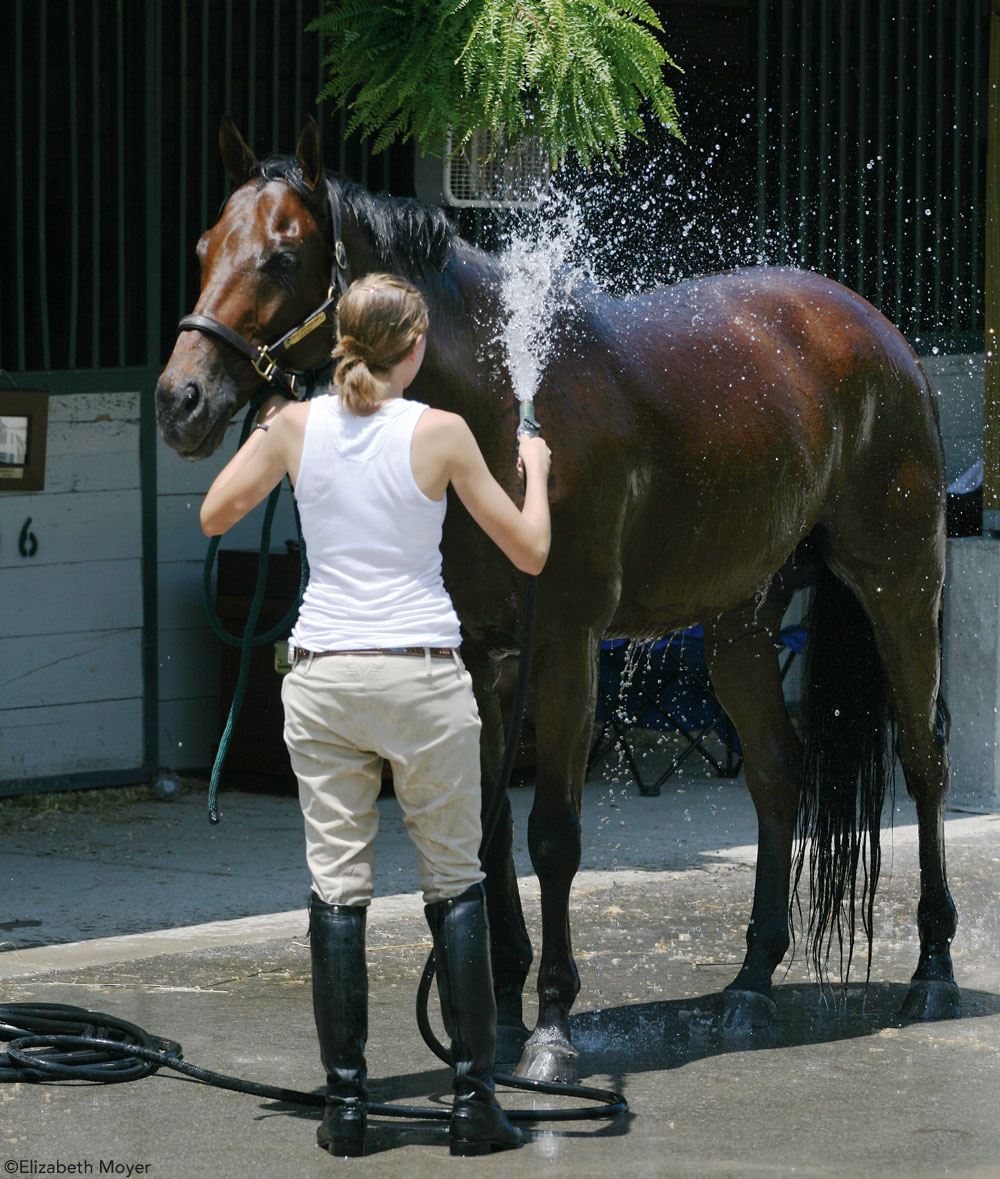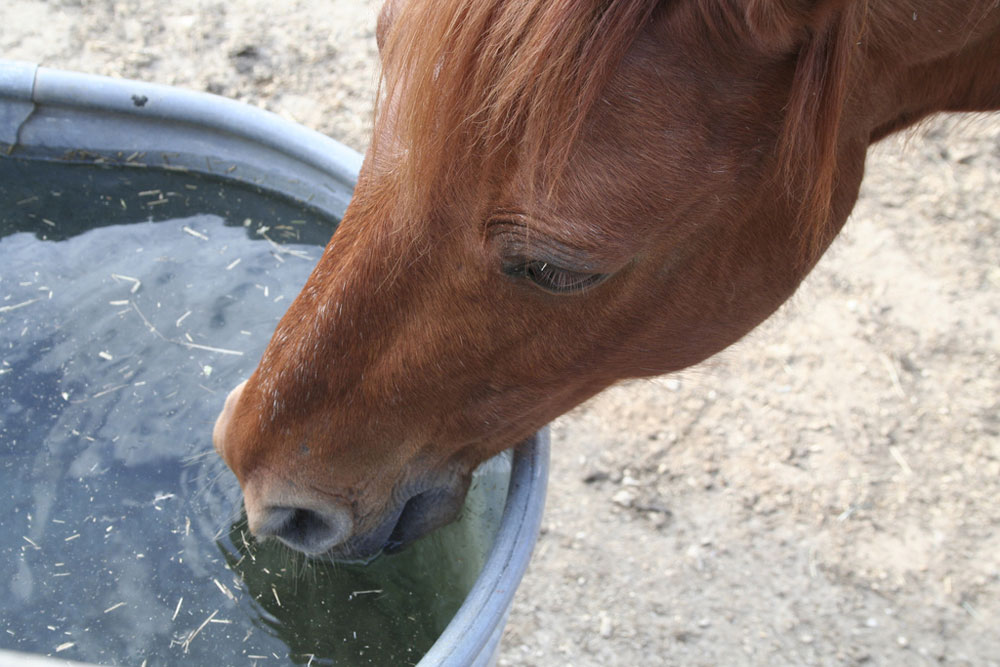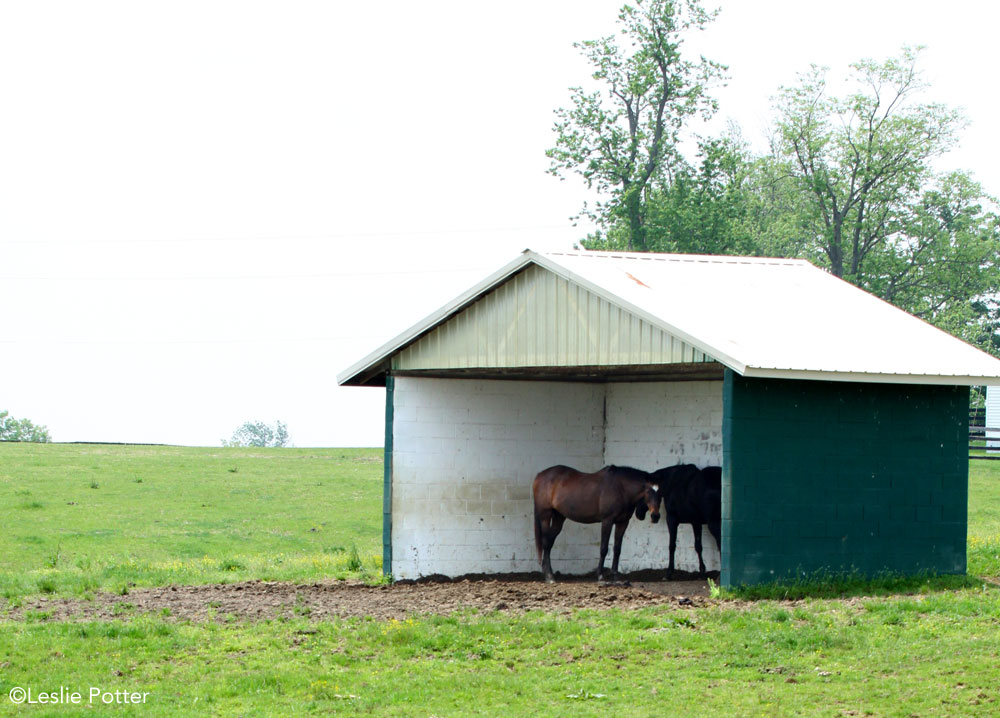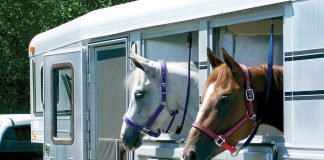You’ve just finished a group lesson and notice that the other horse’s necks and flanks are darkened with sweat. Leaning down to pat your horse, you see that he hasn’t sweated at all. Does this mean your horse is more fit than the others, or is the lack of sweat a cause for worry?

While many things can play into how sweaty (or not) your horse is, it’s worthwhile to start keeping a closer eye on him if you feel his sweating—or lack thereof—has recently changed.
Sweating is key to your horse’s ability to get rid of excess body heat. If he is unable to dissipate heat buildup through sweating, he risks heat stroke.
What is Anhidrosis?
Anhidrosis is the minimized or total loss of the ability to sweat, explains Dr. Robert W. Brusie, DVM, Diplomate American College of Veterinary Surgeons and Staff Surgeon and partner at Palm Beach Equine Clinic in Wellington, Fla. Because the horse isn’t able to release heat through traditional means, he will become hyperthermic, or overheated.
Heat stress, metabolic and environmental factors can all play a role in anhidrosis, he notes. “Oftentimes we see anhidrosis in older horses. Many horses that are hypothyroid or have Cushings disease are affected as well.”
What Horses are at Risk?
Anhidrosis can affect any age or breed of horse. “I think [the incidence of] European horses and ponies may be somewhat over represented,” Dr. Brusie says, “though this may be due to the large number of these horses we see in our practice.” Palm Beach Equine Clinic has 24 veterinarians whose main focus is performance horses (show jumpers, show hunters, polo, dressage and racing Thoroughbreds).
It’s believed that up to 25 percent of horses in hot climates may be affected with some degree of anhidrosis.
Anhidrosis affects horses more in warmer areas of the country; it’s believed that up to 25 percent of horses in hot climates may be affected with some degree of anhidrosis.
“We will have some summers where we may have as many as 10 to 15 percent of horses that ‘shut down’ [and stop sweating],” Dr. Brusie explains. “It occurs in the summer months when the low temperatures are in the 80s. In south Florida, it rarely is over the mid- to high-90s, but nighttime lows stay in the mid-80s with relative humidity in the 90s.”

With temperatures this high on a steady basis, horses need to sweat almost constantly to try to cool themselves. One possible cause of anhidrosis is the exhaustion of the sweat glands.
“It is interesting to note that when then nighttime temperatures fall below 75 degrees, most of these horses will resume sweating on their own,” notes Dr. Brusie.
“We have a large number of European horses imported here in the wintertime [to compete at the Winter Equestrian Festival],” explains Dr. Brusie. “Many of these horses have winter hair coats and are in ‘winter mode’; occasionally these horses will stop sweating.”
Many horses that are non-sweaters stop sweating with an abrupt and prolonged rest. “It seems as though once they start sweating, they should be made to sweat (or work) daily,” Dr. Brusie says.
Symptoms of Anhidrosis
One of the first clinical signs of anhidrosis is rapid breathing when the horse is exercising. Further examination reveals little or no sweat, or sweat only under the saddle pad. A quick-and-dirty diagnosis can be made is if the horse is breathing rapidly, producing very little or total lack of sweat and has a rectal temperature over 103 degrees F. If all of these factors are in place, there is a very good chance that the horse has stopped sweating, says Dr. Bruise.
If a horse’s temperature is over 105 degrees and rising, it is a medical emergency, says Dr. Brusie. You should bring the horse into the shade and hose his body with cold water, immediately scrape the water off and repeat until his temperature comes down. You can also pour rubbing alcohol over the horse’s back and direct as many fans as possible onto the horse’s body. Dr. Brusie has also stood affected horses in ice, and hung ice bags over their neck and back.
Not taking immediate action can have dire consequences—seizures and death are very real possibilities should the horse’s internal temperatures continue to rise.
Treatment for Anhidrosis
“Day-to-day management [of horses with anhidrosis] would include not turning the horse out in the daytime,” advises Dr. Bruise. “Many horses will stand in the sun (even when shade is available) and overheat. Try not to work the horse in the heat of the day. If the horse has to work in the heat, try wetting his skin down before, after and even during exercise. If you’re at a show, try to find a shady spot at the in-gate if there is a long wait to go in your class.”

There are many products available at the tack and feed stores that work on these horses once they start sweating again,” notes Dr. Brusie. “However, I have had mixed results on horses that completely shut down. At our practice, we typically start these horses on clenbuterol to get them to start sweating and then change over to one of the other products.” Clenbuterol is also commonly used on horses with heaves and should only be administered under a veterinarian’s direction.
You may have heard the old idea about feeding beer to a horse that has trouble sweating. “Interestingly, some of these horses respond to beer,” confirms Dr. Bruise. It’s believed that the yeast extracts and other sources of B-vitamins are helpful in sweat gland function.
Prognosis
“I believe [caring for the anhidrotic horse] is a purely a management issue. We will see many of these old show ponies puffing at the in-gate of the horse show every weekend. As long as you don’t overstress the horse and do everything you can do to try to cool them off, it is very manageable,” he explains. “For many of these horses, the anhidrosis is only transient and they will resume sweating once it cools off at night.”






